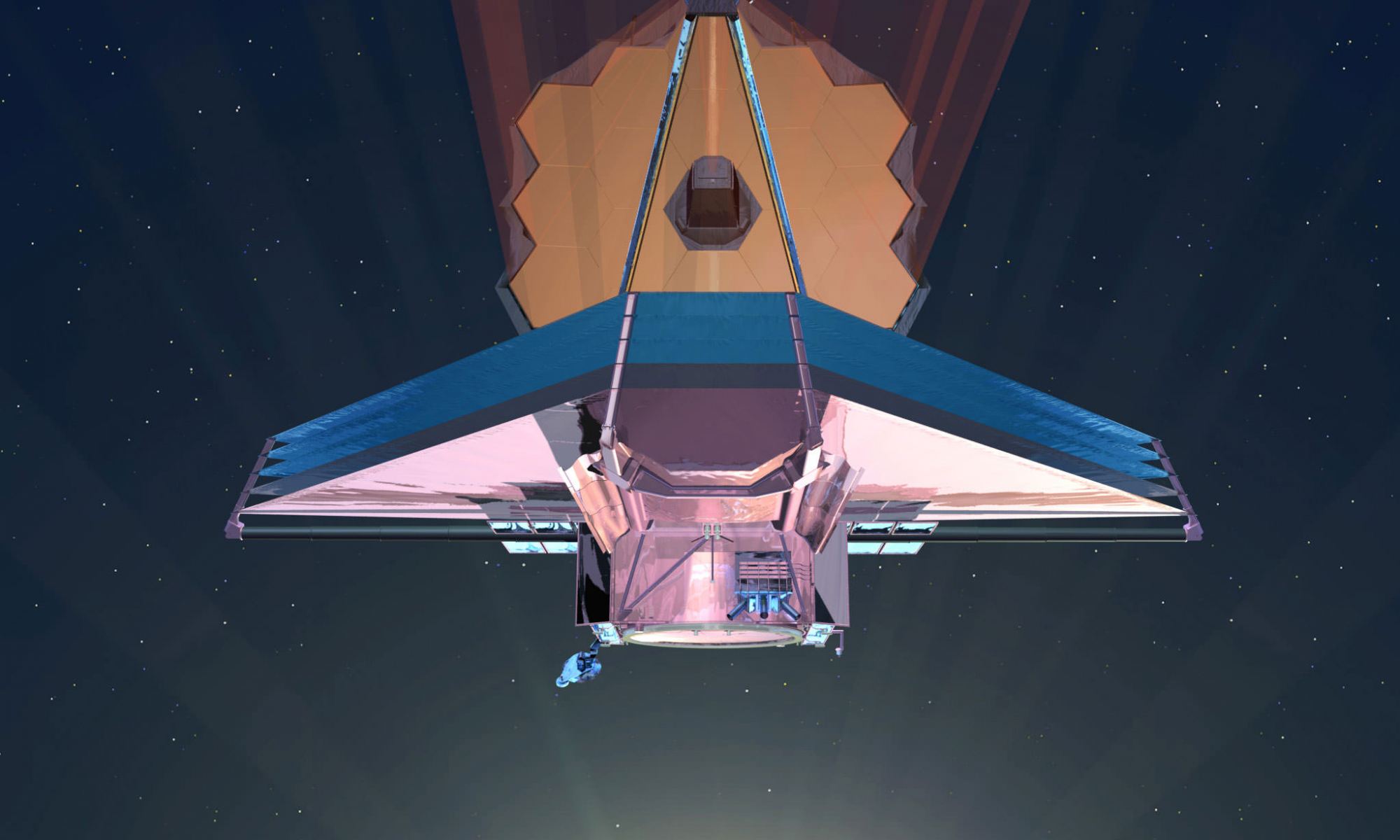When it launches next year, the James Webb Space Telescope (JWST) will be the largest, most complex, and most sophisticated observatory ever sent into space. Because of this, the mission has been delayed multiple times as ground crews were forced to put the telescope through a lengthy series of additional tests. All of these are to make sure that the JWST will survive and function in the vacuum and extreme temperature environment of space.
Recently, the testing teams conducted the critical “Ground Segment Test,” where the fully-assembled observatory was powered up and to see how it would respond to commands in space. These commands were issued from its Mission Operations Center at the Space Telescope Science Institute (STScI) in Baltimore. Having passed this latest milestone, the JWST is now on track for its scheduled launch next year in October.
To summarize, the ground segment test involves crews conducting the full end-to-end process that begins with mission planning and ends with the scientific data it obtains being posted to the community archive. This ensures that all components of the observatory will function in space and will work with the complex communications networks to both receive commands and send back data.

As Amanda Arvai, the Deputy Division Head of Mission Operations at STScI, said in a recent NASA press release:
“This was the first time we have done this with both the actual Webb flight hardware and ground system. We’ve performed pieces of this test as the observatory was being assembled, but this is the first ever, and fully successful, end-to-end operation of the observatory and ground segment. This is a big milestone for the project, and very rewarding to see Webb working as expected.”
For this test, the mission team sent commands from the Mission Operations Center to activate and then operate each of four instruments that make up the JWST’s Integrated Science Instrument Module (ISIM). These include the Near-Infrared Camera (NIRCam), the Near-Infrared Spectrograph (NIRSpec), the Mid-Infrared Instrument (MIRI), and the Fine Guidance Sensor/Near InfraRed Imager and Slitless Spectrograph (FGS/NIRISS).
Once Webb is in space, commands will be sent from the STScI in Baltimore to one of the three arrays that make up the Deep Space Network (DSN). NASA uses this international array of massive radio antennas – which are located in California, Spain, and Australia – to communicate with missions once they are in deep-space. These commands will then be transmitted to the observatory as it orbits at the Earth-Sun L2 Lagrange Point.
To simulate the distances involved once the JWST is in space – 374,000 km (232,000 mi) at perigee and 1.5 million km (930,000 mi) at apogee – the Flight Operations Team relied on a special emulator that simulated a radio link between the observatory and the DSN. Commands were then relayed through the DSN emulator to the JWST, which is currently located in the cleanroom at the Northrop Grumman facility in Redondo Beach, California.

As Arvai stated, this was the first time the Flight Operations Team demonstrate the complete cycle for conducting observations with the observatory’s ISIM suite. As she described it:
“This cycle starts with the creation of an observation plan by the ground system which is uplinked to the observatory by the Flight Operations Team. Webb’s science instruments then performed the observations and the data was transmitted back to the Mission Operations Center in Baltimore, where the science was processed and distributed to scientists.”
The test was conducted by a team of nearly 100 people over the course of four consecutive days. However, only seven staff members were present inside the Mission Operations Center due to staffing restrictions imposed by the COVID-19 pandemic. The rest of the team worked remotely and relied on telepresence to routinely monitor the physical team and the test’s progress.
With this test complete, the next step in getting the observatory ready for space will involve level acoustic and sine-vibration testing. These will determine if the observatory can withstand the rigors and forces it will experience during launch and in the extreme environment of space. Similar tests have been conducted using Webb’s individual components, but this will be the first time that the fully-assembled telescope is tested.

The JWST is the result of many years of hard work by scientific institutes, commercial entities, and multiple space agencies – NASA, the ESA, and the Canadian Space Agency (CSA). Once it launches in October of 2021, this next-generation space telescope will essentially expand on the discoveries made by missions like the Hubble, Kepler, and Spitzer space telescopes and pick up where they left off.
Its advanced suite of infrared instruments, spectrographs, and coronagraphs will observe distant stars and exoplanets, allowing scientists to characterize them like never before and determine if they could support life. It will also search for life within our Solar System by studying planets and moons, particularly the icy moons of Jupiter and Saturn that have interior oceans (Europa, Ganymede, Enceladus, Titan, etc.)
Its powerful optics will allow it to peer back in time to the very earliest period in the Universe, giving us a glimpse of when and how the first stars and galaxies formed. And it will probe the large-scale structure of the Universe to measure its rate of expansion and discern the role played by Dark Matter and Dark Energy in cosmic evolution.
Further Reading: NASA

